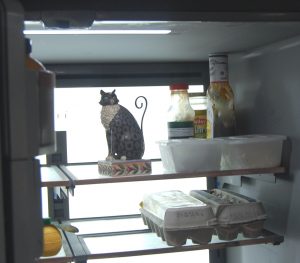Last Friday, Colonial Pipeline, the operator of the largest petroleum pipeline between Texas and New Jersey, was struck with ransomware. Today, U.S. gasoline prices are the highest since 2016 and pumps are empty on the east coast; a direct consequence of the hack.
If you have followed my posts on ransomware and cybersecurity in general, you know that I rant on the dangerous condition of industrial cybersecurity in the U.S. Maybe Cassandras like me will get some attention now that disregard for cybersecurity has slugged the average taxpayer in the wallet.
When the Space Force was established, I didn’t sleep any sounder, but I know my nights will be better when U.S. cyber defense policies are as coherently and vigorously executed as our conventional defenses.
Colonial Pipeline
Colonial says they will be back in operation by the end of the week. We will see. The average ransomware recovery time is over 15 days, which predicts another week of disruption. Time to recover depends on a number of things. The size of the enterprise matters; the more complex and extended the system, the longer it takes to bring the system back. Recovery also depends on how prepared Colonial’s IT team is for a ransomware attack. I notice the Dow is dropping today, probably due to gas shortage jitters, which suggests that the smart guys on Wall Street are not confident of a quick recovery from Colonial.
Colonial is big and complex. It is not clear whether Colonial’s pipeline supervisory control and data acquisition (SCADA) was penetrated by the hack, but the pipeline was forced to shut down, which suggests the attack went beyond the usual accounting and HR systems.
Here in Whatcom County, we had some experience with a pipeline SCADA failure in 1999 when 200,000 gallons of gasoline flowed into Whatcom Creek and caught fire. A fisherman and two boys playing along the creek died. Property damage was at least $45 million. The direct cause was accidental damage to the pipe from excavation years earlier, but National Transportation Board investigation concluded that the spill could have been prevented if the SCADA had functioned properly. There were clues that the SCADA system had been hacked, but not enough evidence to be certain. (I discuss SCADA vulnerabilities in some detail in my book, Personal Cybersecurity.)
DarkSide
The FBI reports that the attack came from a Russian group called DarkSide. The group is not known to be directly affiliated with the Russian government, but the government turns a blind eye to DarkSide attacks on non-Russian interests. Effectively, DarkSide operates like a 18th century privateer on the high seas marauding foreign shipping with royal protection. The DarkSide group offers ransomware software for use by others. Who else may be involved has not been reported.
Who’s to blame?
Blaming Colonial for the breach may come easy. My personal experience with industrial cybersecurity is not good. Industries with high fences and tight physical security, like energy corporations, are often dismissive of cybersecurity threats, preferring to rely on their raw physical defenses. Colonial may be the exception, but I’m reminded of the recent SolarWinds hack that was the result of a totally avoidable bonehead password mistake. If something similar emerges, Colonial’s IT department will be roasted on a spit.
Nevertheless, I am sympathetic. Colonial Pipeline and many other ransomware victims are being attacked with the aid of a foreign government. Of course they bear some responsibility for their own security, but when a foreign government attacks, they should reasonably expect that government resources will lead the defense.
If a refinery were threatened by incoming ballistic missiles from North Korea, we would look to the Department of Defense to deflect the attack. We would see the missiles as an attack on our nation. Would anyone fault a corporation for building a refinery without an anti-missile defense system? They would be in trouble if they tried!
When the Space Force was established, I didn’t sleep any sounder, but I know my nights will be better when U.S. cyber defense policies are as coherently and vigorously executed as our conventional defenses. Today, responsibility for cyber defense is divided between the Department of Defense, Homeland Security, and other agencies, including the National Institute of Standards and Technology (NIST) in the Department of Commerce.
How we lose
This is the way to lose. Ransomware is just one manifestation of the ways in which nations are attacking on the cyber front. North Korea steals cash. China steals intellectual property on covid-19. Russia disrupts pipelines. These are existential threats. A disconnected defense is suicide by disorganization.
